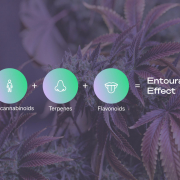CBD boasts numerous health benefits towards unlocking its full potential hinges on determining the right dosage for your selected product.
Explore our comprehensive CBD dosage guide, featuring a general dosage chart, insights on calculating precise CBD dosages for specific conditions, the latest research on dosing, and potential side effects.
When it comes to CBD dosages, it’s a nuanced consideration influenced by various factors such as body weight, metabolism, and individual symptoms. The quality and concentration of your chosen CBD product further impact the ideal dosage.
While variables abound, a common starting point for most individuals is a CBD dosage ranging from 20 to 40 mg per day. Adjustments may be necessary based on sensitivity or weight, with those under 100 pounds possibly requiring a slightly lower dosage and individuals over 200 pounds leaning towards a higher range.
After a consistent week of supplementation, many opt to incrementally increase their dose. We suggest experimenting with 5 mg intervals until reaching the point where additional benefits are no longer noticeable.
It’s crucial to note that CBD products are infusions, meaning 1 ml of CBD does not equate to 1 mg of CBD. This principle applies to edibles as well. Consult the product label to determine the CBD infusion by weight in your chosen product.
CBD Dosage Chart
Presenting a straightforward CBD dosage chart that considers user body weight in conjunction with condition severity. Although achieving the ideal dosage involves understanding more about individual factors, consider this as a solid starting point for your CBD journey:

Refer to the provided table to estimate a general dosage based on your body weight and condition. This serves as a starting point for your personal experimentation.
After determining an approximate amount, assess the concentration of your CBD oil or edible to determine the specific dosage. Some products offer straightforward single servings, while others may require you to calculate the dosage yourself.
Calculating CBD Dosage: A Step-by-Step Guide
Estimate the size of a single drop of CBD oil from a tincture, typically around 0.05 ml. Divide the total size of the CBD bottle by this number to determine the quantity of drops in the bottle.
Refer to the label on your CBD oil to identify its concentration. Divide the concentration by the number of drops in the bottle to ascertain the amount of CBD in each individual drop.
Armed with the knowledge of CBD content per drop, calculating the number of drops needed for your specific requirements becomes straightforward.
How to take CBD oil
CBD oil is a versatile supplement that can be consumed in several ways. Most experts recommend dropping the oil under your tongue, in what’s known as sublingual application.
Sublingual application allows much of the CBD to be absorbed directly into the blood vessels in the mouth. This means less is lost to the metabolic or digestive processes that occur when CBD enters the body through the lungs or the stomach.
Other popular ways to use CBD include adding drops to food or massaging it directly into the skin.
CBD Dosage with Edibles
Numerous CBD and cannabis consumers note that the impact of edible CBD is often delayed and less predictable compared to CBD that is inhaled or taken sublingually. Allow a generous 3 to 4 hours for your dose to take effect before forming any conclusions or considering additional intake.
Additionally, it’s crucial to understand that 1 mg of an edible does not equate to 1 mg of CBD. Exercise caution and read labels meticulously to ascertain concentrations and be mindful of other ingredients and potential allergens.
Research and benefits of CBD
The science of CBD is ongoing. Every month, new studies emerge showing the benefits and relevancy of cannabis compounds to a range of inflammatory conditions.
Researchers are providing evidence to back up user claims about CBD’s safety. For example, this review conducted in 2017 found CBD to be a safe treatment across several rigorous studies.
What the research says about CBD dosages
Clinical studies involving human participants and CBD have used many different dosages to positive effect. These range between 20 and 1500 mg.
Successful treatment has been recorded with a 40 mg daily dose for people with schizophrenia, a 150 mg dose for Parkinson’s, and high doses of over 1000 mg to treat some patients with psychosis.
Another study found that doses up to 1500 mg are well-tolerated by most people. All of which further confirms that there is no “right” amount of CBD, only an amount that works for your needs.












